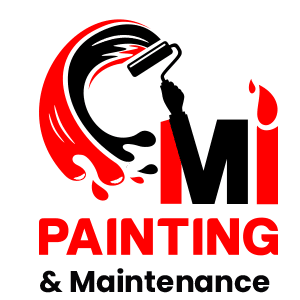Exterior paints come in a vast array of colours, like their interior paint counterpart. Although they can technically be applied inside, they have been designed to last best in their external environment. Applying exterior paint inside has major drawbacks, and there are better choices for you to make.
What is the difference between exterior and interior paint?
All paints are made up of resin, solvent, and pigment. However, some paints have essential differences that can affect their suitability for certain surfaces. Paints also differ in their appearance, texture, and finish. Various varieties can be used for their respective looks, each differing in terms of sheen, reflectivity, durability, and so on.
A lot of subtle differences exist between interior and exterior paints, but the primary one is the resin used. Resin is what holds the pigments together. The paint that goes on the exterior must be more durable and resistant to temperature changes and moisture exposure. It is no good if it peels, chips, or fades when exposed to sunlight. Resins used for binding exterior paints need to be softer to prevent being damaged by sunlight or other weather conditions.
The difference between exterior and interior paint stems from the requirements of the surface they are applied to. This is because these surfaces are affected by differing environments. Exterior paint needs to be able to withstand wind, rain, and intense heat while interior paint doesn’t. In contrast, interior paint needs to be easier to clean and maintain than exterior paint, since imperfections are more noticeable and unsightly on the inside of your house. Because of this, interior paints require different handling than exterior paints.
Is it ok to use exterior paint inside the house?
You might think that using exterior paint indoors would be more beneficial. It saves you from having to buy two different kinds of paint and provide your walls with added protection due to the built-in design of exterior paints helping against stains and abrasions. However, using exterior paint indoors is not recommended as it can affect your health.
Since these paints are designed to withstand the outdoor environment, they contain larger volumes of chemicals. These chemicals generate fumes that are toxic to humans when inhaled excessively. If used in a room with low ventilation, these fumes can build up and turn that space into a health hazard.
Despite this, there are some scenarios where the use of exterior paint can be used in indoor spaces. Rooms that are either outdoors or located somewhere people don’t sleep or stay in regularly are good locations for the use of exterior paint. It is still recommended to use interior paints for indoor surfaces. However, if you have some spare paint leftover after an outdoor paint job, that leftover can be used indoors in these scenarios.
What happens when you use interior paint outside?
When you apply indoor paint to an external surface, you are setting up a future for yourself where you are forced to spend more money and dedicate more time to painting. This is because using interior paint outside will cause the paint job to deteriorate, fade away, or become brittle over time due to the impact the weather conditions will have on it.
Indoor paints aren’t designed to withstand outdoor environments like exterior paint. As a result of this, using interior paint for your external surfaces will force you to repaint more often than if you had just used exterior paint. So it is not considered cost or time effective to apply coats of indoor paint outside.
Conclusion
The use of exterior paint indoors is strongly advised against in most scenarios. Spending some more money to get the right paint rather than risking a health problem is a way better pay off. An experienced, professional painter knows this is the case, so it might be wise to invest in hiring a professional to paint your interior and exterior surfaces for you. This will save you the headache of worrying about the effects of various paints on your walls and ensure you get a clean and safe final finish.
